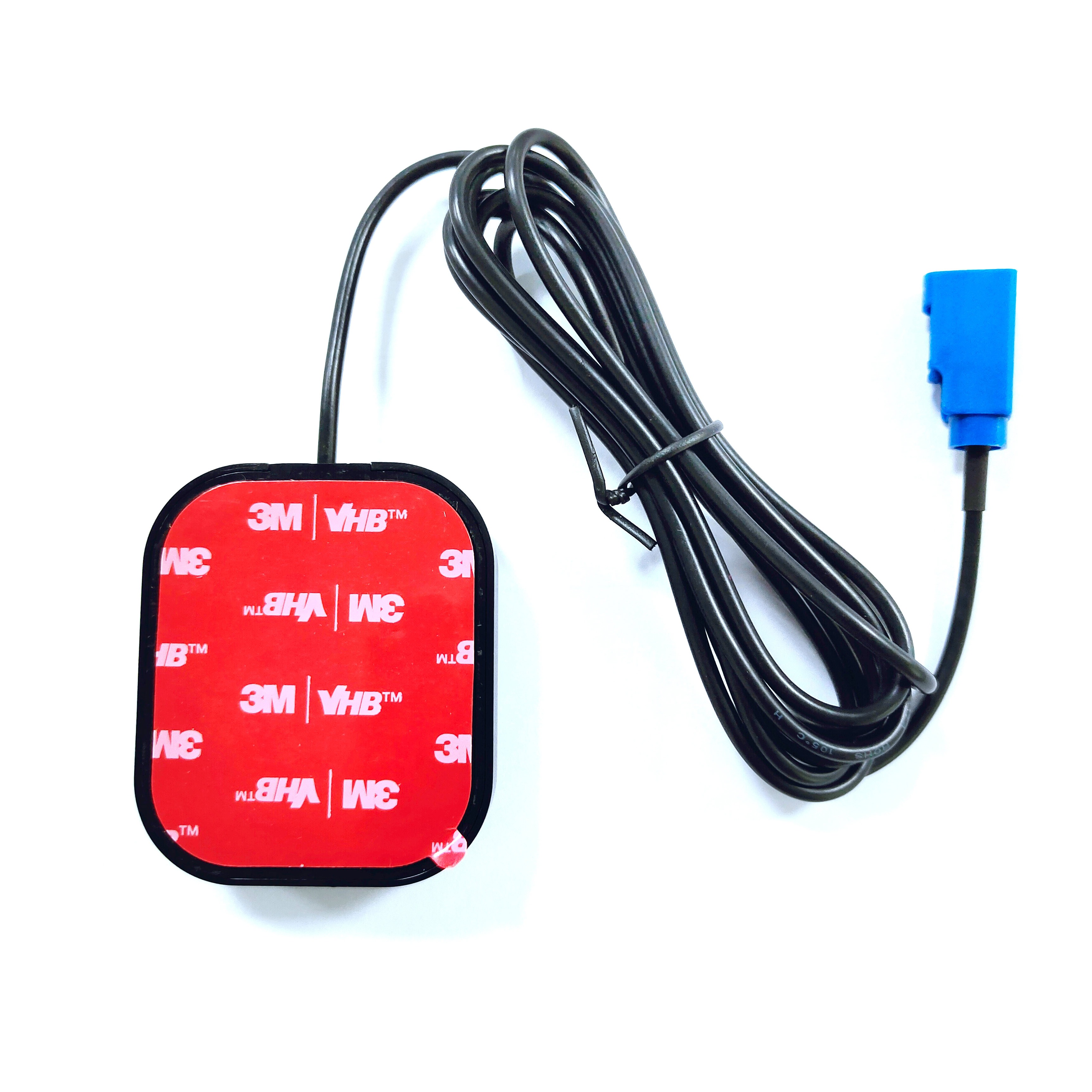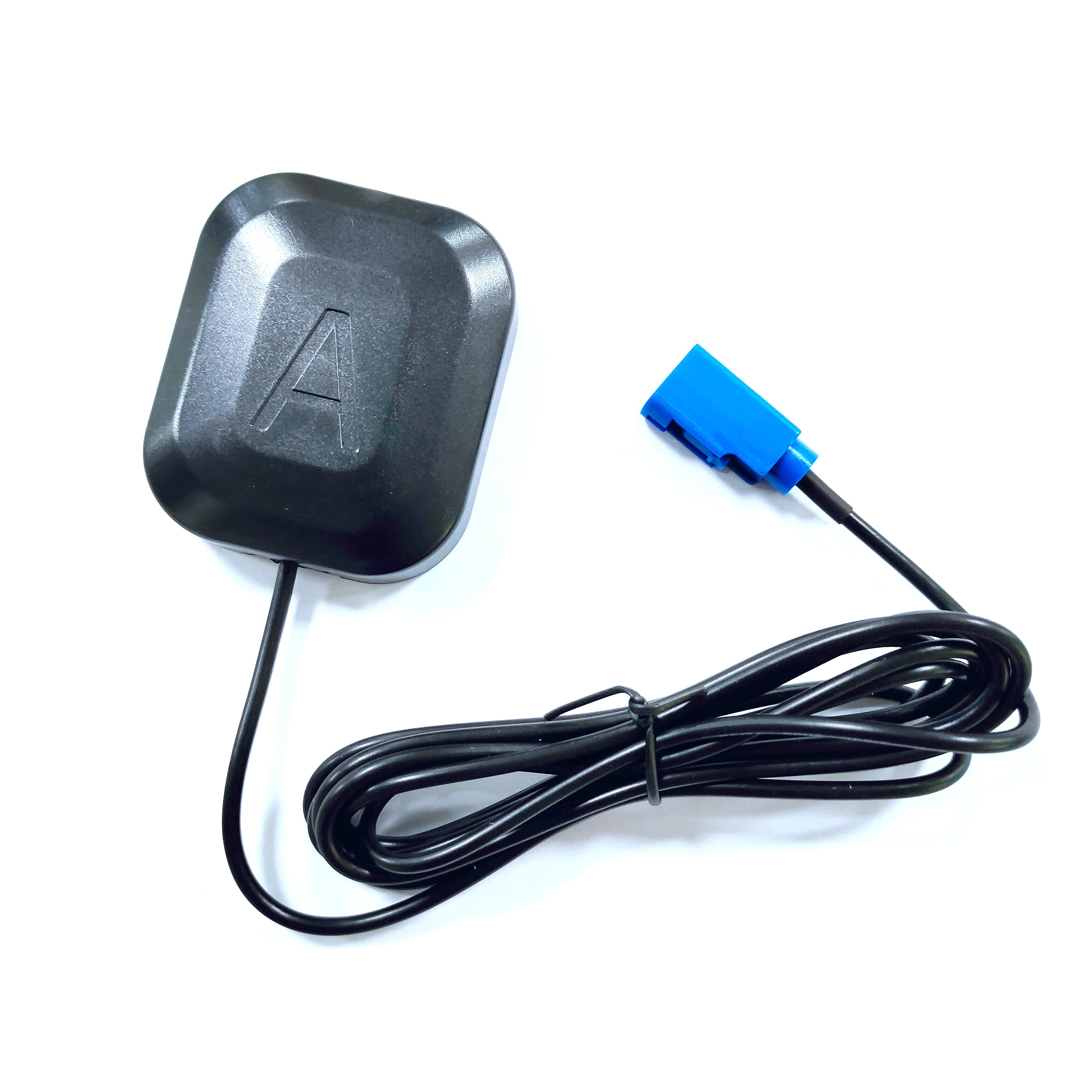The performance of the GNSS RTK Active Antenna is measured by its ability to provide accurate, real-time positioning data for vehicle navigation and fleet tracking, even in adverse conditions. Key performance metrics include:
RTK Positioning Accuracy: When paired with an RTK receiver and a base station, the antenna enables positioning accuracy of 1-5 centimeters horizontally, a level of precision critical for applications such as precise route following, lane-level navigation, and fleet tracking with tight geofencing. This accuracy is achieved by processing real-time correction data, which the antenna receives and amplifies efficiently, even in weak signal conditions.
Signal Sensitivity: The high gain (28 dBi) and low noise figure of the LNA ensure that the antenna can detect and amplify weak satellite signals, with a typical sensitivity of -160 dBm or better. This allows the antenna to maintain connectivity with satellites even in urban canyons, under tree cover, or in remote areas with few visible satellites— scenarios where passive antennas might fail.
Multipath Rejection: While linear polarization is more susceptible to multipath interference (signal reflections from buildings or terrain) than circular polarization, the antenna’s design includes features to mitigate this issue. These may include a ground plane (a metallic layer beneath the radiating element) to reduce reflections from the vehicle’s roof, as well as filtering components to suppress unwanted signals. This ensures that multipath errors are minimized, preserving positioning accuracy.
Signal Availability: By supporting both GPS L1 and BDS B1 bands, the antenna increases the number of visible satellites, enhancing signal availability. In regions where one constellation is weak (e.g., GPS in remote areas), the other constellation (BDS) can provide backup, ensuring continuous positioning data. This redundancy is critical for fleet tracking, where lost signals could result in missed locations or delayed updates.
EMI Resistance: The shielded cable and FAKRA connector minimize EMI from vehicle electronics, ensuring that the amplified satellite signals are not corrupted. This resistance to interference is particularly important in modern vehicles, which are equipped with numerous electronic systems (e.g., infotainment, ADAS) that can generate RF noise.
Vibration and Shock Resistance: The antenna’s rugged ABS housing and secure connector design enable it to withstand the vibrations and shocks encountered during vehicle operation, from rough roads to sudden stops. This ensures that the antenna remains functional and maintains signal integrity, even in harsh driving conditions.
Rapid Signal Acquisition: The antenna’s high gain and sensitivity enable quick acquisition of satellite signals, reducing the time it takes for the navigation system to determine the vehicle’s position (cold start time). This is particularly valuable for fleet tracking, where vehicles may be parked in garages or under cover and need to acquire signals quickly when they start moving.
These performance capabilities make the GNSS RTK Active Antenna a reliable choice for vehicle navigation and fleet tracking, ensuring that precise positioning data is available when and where it is needed.
Applications: Transforming Vehicle Navigation and Fleet Management
The GNSS RTK Active Antenna is designed to meet the specific needs of vehicle GPS navigation and fleet tracking, enabling a range of applications that enhance efficiency, safety, and productivity:
Vehicle GPS Navigation: In passenger cars, commercial vehicles, and emergency services, the antenna provides the high-precision positioning data needed for advanced navigation features. This includes lane-level guidance, which helps drivers stay in the correct lane on highways; real-time traffic updates, which enable dynamic route optimization; and points-of-interest (POI) accuracy, ensuring that drivers reach their destinations with minimal confusion. The antenna’s ability to maintain signal in urban areas ensures that navigation remains reliable even in dense city centers.
Fleet Tracking and Management: For logistics companies, delivery services, and public transportation fleets, the antenna enables real-time monitoring of vehicle locations, speeds, and routes. Fleet managers can use this data to optimize delivery schedules, reduce fuel consumption by minimizing idle time and inefficient routes, and ensure that drivers adhere to assigned paths. The centimeter-level accuracy also supports geofencing— setting virtual boundaries that trigger alerts when vehicles enter or exit specific areas, enhancing security and preventing unauthorized use.
Vehicle Telematics: The antenna integrates with telematics systems to collect and transmit data on vehicle performance, driver behavior, and maintenance needs. For example, it can track harsh braking, acceleration, or cornering, helping fleet managers identify unsafe driving practices and provide targeted training. The precise location data also enables accurate logging of vehicle usage, supporting billing, insurance, and compliance with regulations (e.g., hours-of-service rules for commercial drivers).
Emergency Services Navigation: Ambulances, fire trucks, and police vehicles rely on precise positioning to reach emergencies quickly. The antenna’s high sensitivity ensures that navigation systems remain functional even in remote areas or under adverse weather conditions, reducing response times. The RTK accuracy also helps emergency vehicles navigate to specific entry points of a building or incident location, improving operational efficiency.
Agricultural and Construction Vehicles: In specialized vehicles used in agriculture or construction, the antenna supports precision navigation for tasks such as crop spraying, plowing, or grading. The centimeter-level accuracy ensures that these tasks are performed with minimal overlap or gaps, reducing waste and improving productivity. The antenna’s durability in extreme temperatures and harsh environments makes it suitable for these outdoor applications.
Rental and Leasing Fleet Management: Rental car companies and vehicle leasing firms use the antenna to track their assets, prevent theft, and ensure that vehicles are used within agreed-upon areas. The real-time location data enables quick recovery of stolen vehicles, while geofencing alerts notify managers if vehicles are driven outside authorized regions. The antenna’s reliability ensures that tracking remains consistent, even with frequent vehicle handovers.
Autonomous Vehicle Development: In the development of self-driving cars, the antenna provides the high-precision positioning data needed for navigation and obstacle avoidance. The RTK accuracy, combined with other sensors (e.g., LiDAR, cameras), enables autonomous vehicles to determine their position relative to lanes, curbs, and other vehicles with exceptional precision. The antenna’s performance in diverse environments is critical for testing and deploying autonomous systems safely.
These applications highlight the antenna’s versatility and its role in driving innovation in vehicle navigation and fleet management.




































































 Language
Language
 En
En Cn
Cn Korean
Korean

 Home >
Home > 






 18665803017 (Macro)
18665803017 (Macro)













